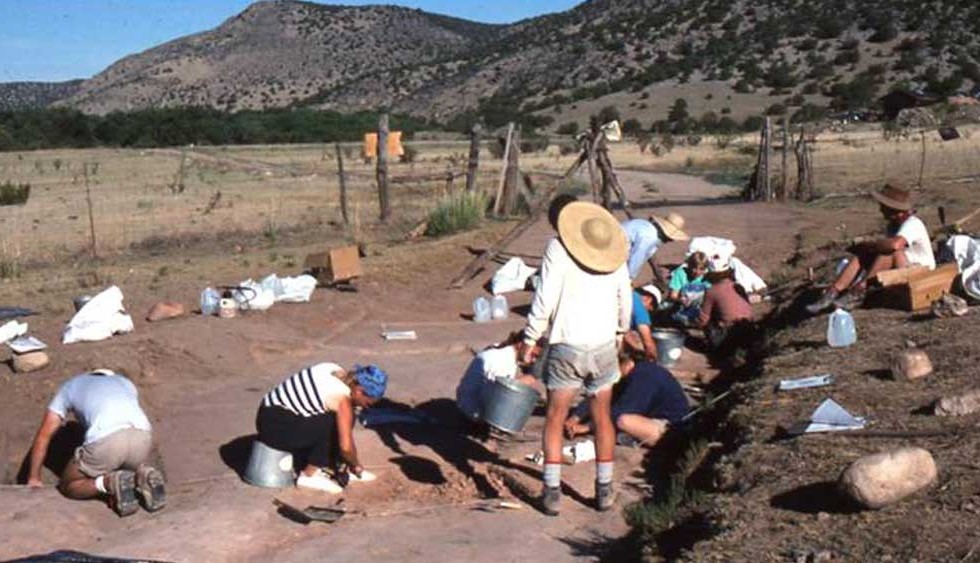March 2013: Dr. Tom Rocek, ‘From the Jordon to the Jornada, The Origin of Village Life in the Old World and the New’

March 17
Dr. Tom Rocek From the Jordon to the Jornada: The Origin of Village Life in the Old World and the New
Many past societies have undergone shifts from small, mobile pre-agricultural groups to larger settled farming villages. Some such transformations spread from one group to the next, but others involve independent transitions in separate parts of the world. I compare the development of farming villages in New Mexico in the first millennium AD with parallel developments in the Middle East ten millennia earlier.
Tom Rocek (Ph.D. University of Michigan) is an Associate Professor of Anthropology, with a specialization in Archaeology. His major research areas have included historical Navajo archaeology, and more recently early prehistoric agricultural communities in the United States Southwest. His research emphasis is on “middle-range” or “tribal” societies: that is, societies typically organized around non-industrialized domestic production and local political systems, but often involving agricultural or pastoral economies and sometimes interacting with larger economic and political systems. As an archaeologist, most areas of material culture fall within his areas of interest. His recent work has emphasized variation in settlement systems, storage technologies and architecture, as well as cultural and biological indicators of prehistoric economies.
His publications include “First Millennium Pithouse Village Diversity in Southeastern New Mexico.” with A. Rautman, in Foundations of Southwestern Communities, Lisa Young and Sarah Herr (eds.). University of Arizona Press, Tucson (2011), “Ceramic Variability, Subsistence Economies, and Settlement Patterns in the Jornada Mogollon,” with Meghan Howey, Kiva 74(1):7-32. (2008), and “Variation in the Settlement-Subsistence Correlation within the Jornada Mogollon,” in Exploring Variability in Mogollon Pithouses, B. J. Roth and R. J. Stokes (eds.), pp. 61-70, Arizona State University Anthropological Research Papers No. 58, Arizona State University, Tempe (2007). He is currently preparing a monograph on his excavations at the Dunlap-Salazar site, a 1st millennium AD pit house settlement in Lincoln County, southeastern New Mexico.
 Archaeology Society of Staten Island
Archaeology Society of Staten Island